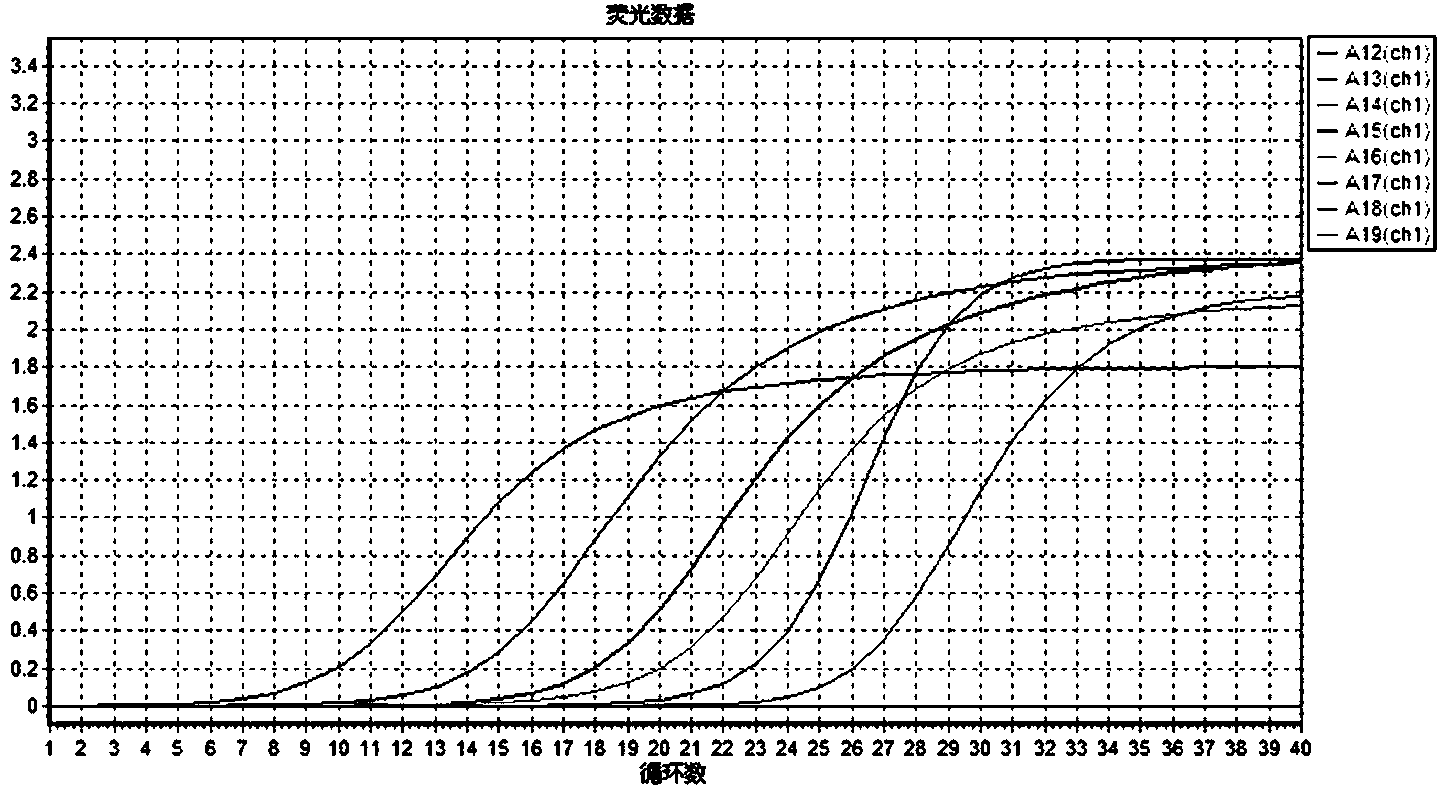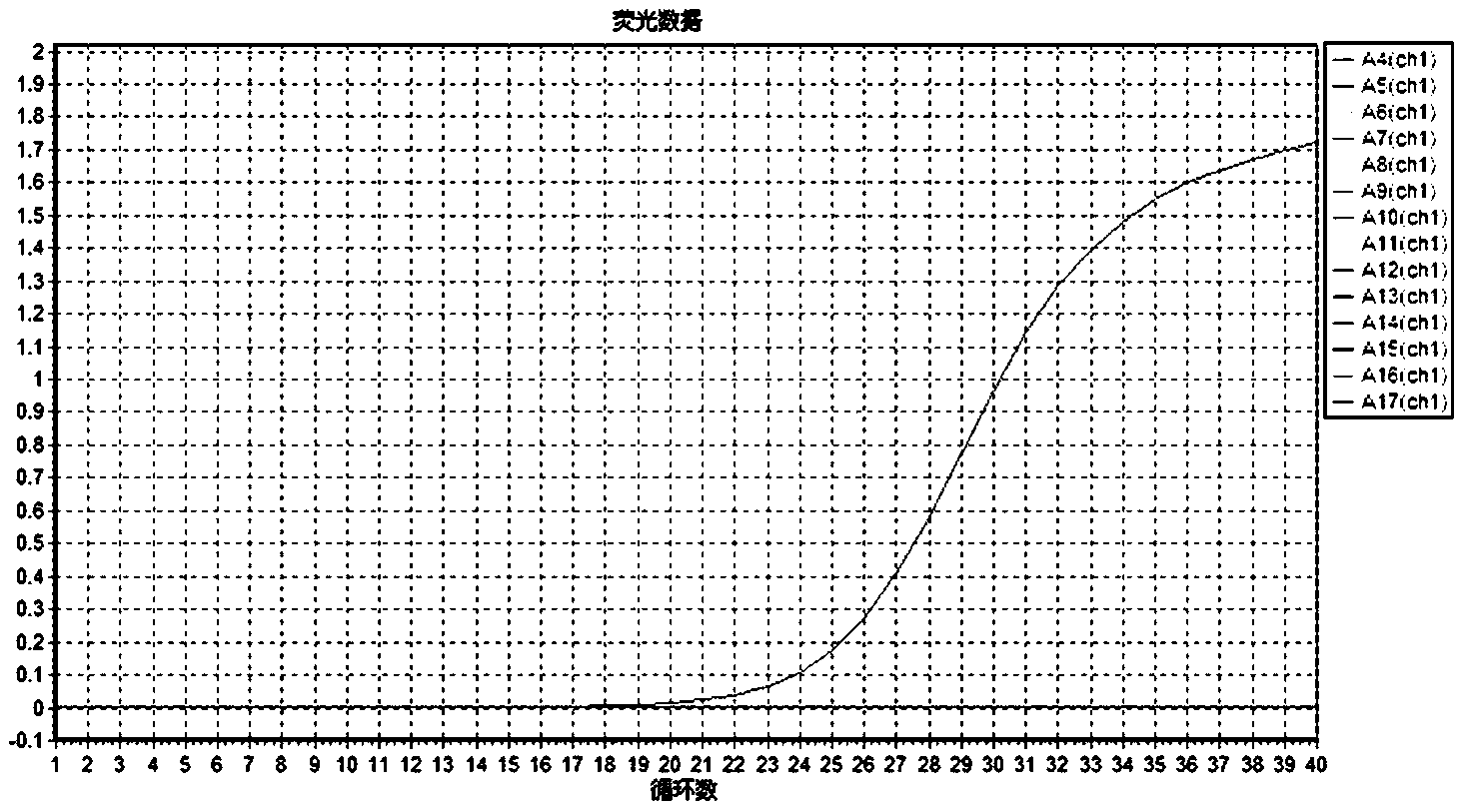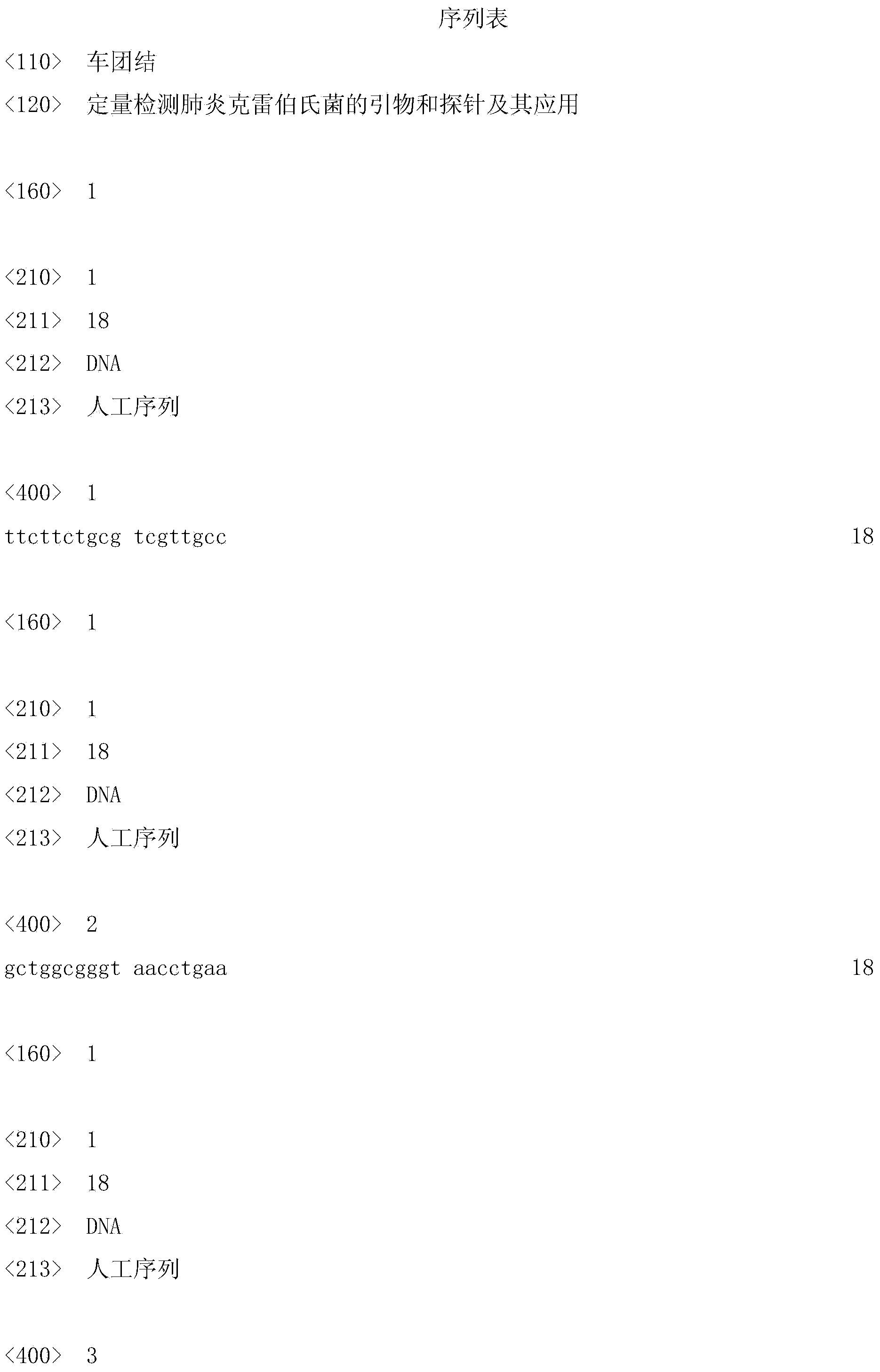Primer and probe for quantitative determination of klebsiella pneumonia, and application of primer and probe
A technology for quantitative detection of Klebsiella, which is applied to the quantitative detection of Klebsiella pneumoniae primers and probes and its application field, which can solve the problems of long detection cycle, unsatisfactory requirements, and unsatisfactory treatment.
- Summary
- Abstract
- Description
- Claims
- Application Information
AI Technical Summary
Problems solved by technology
Method used
Image
Examples
Embodiment 1
[0023] Preparation of RecA gene sequence standard:
[0024] In order to establish a real-time fluorescent quantitative PCR method, the external standard required by the method must be prepared first. The standard should contain highly conserved and specific sequences, and high specificity of the reaction should be ensured. The present invention uses the conserved region of the Klebsiella pneumoniae RecA gene sequence as the target sequence. Mainly use PCR technology to amplify the RecA gene sequence of Klebsiella pneumoniae, use gene recombination technology to connect it to the plasmid vector pMD18-T, construct the recombinant plasmid pMD18-T-KpRecA, and carry out corresponding PCR identification and sequencing identification , and finally quantified as a standard for the method to be established, laying the foundation for the next method and evaluation.
[0025] 1. Preparation of template DNA:
[0026] 1. Extract Klebsiella pneumoniae genomic DNA and use it as a template f...
Embodiment 2
[0067] Preliminary establishment of real-time fluorescent quantitative PCR detection method for Klebsiella pneumoniae:
[0068] 1. Design and synthesis of specific primers and probes:
[0069] Taking the conserved fragment of the ITS sequence of Klebsiella pneumoniae selected above as the target, a set of real-time fluorescent quantitative PCR primers and probes were designed using Primer express3 software, Primer Premier5 software and Oligo7 software.
[0070] As the core of the present invention, a group of primers and probe nucleotide sequences for Klebsiella pneumoniae real-time fluorescent PCR detection are as follows:
[0071] Upstream primer: KprecA19F: 5'-TTCTTCTGCGTCGTTGCC-3',
[0072] Downstream primer: KprecA144R: 5'-GCGATCACCTGGCTGAAAG-3'.
[0073] Probe: KprecA51P: 5'-FAM-TCTGGCTTCGCATCCTGATTGTTGA-TAMRA-3'.
[0074] The primers and probes amplify the target nucleotide sequence as:
[0075] 5'-TTCTTCTGCGTCGTTGCCGTCAACAACGAAGTCTGGCTTCGCATCCTGATTGTTGAGCAGCAGTTCGC...
Embodiment 3
[0089] Evaluation experiment:
[0090] 1. Sensitivity experiment:
[0091] The plasmid prepared above was diluted 10 times to obtain a series of concentrations of the plasmid, and the selected concentration was
[0092] 1.00×108 copies / ml, 1.00×10 7 copies / ml, 1.00×10 6 copies / ml, 1.00×10 5 copies / ml,
[0093] 1.00×10 4 copies / ml, 1.00×10 3 copies / ml, 1.00×10 2 copies / ml etc. as gradient templates. The reaction system is shown in Table 4.
[0094] Table 4
[0095] Element
volume
2×premix
10μl
Primer F (5uM)
1.5μl
Primer R (5uM)
1.5μl
Probe (5uM)
0.75μl
template
2μl
wxya 2 o
Make up to 20μl
[0096] The reaction conditions were: 94°C pre-denaturation for 2 minutes, 94°C for 15 seconds, 60°C for 40s and collecting fluorescence signals, 40 cycles. According to the fluorescence signal detected by the instrument, the fluorescence curve is obtained by software processing, and the sign...
PUM
| Property | Measurement | Unit |
|---|---|---|
| Avogadro constant | aaaaa | aaaaa |
Abstract
Description
Claims
Application Information
 Login to View More
Login to View More - R&D
- Intellectual Property
- Life Sciences
- Materials
- Tech Scout
- Unparalleled Data Quality
- Higher Quality Content
- 60% Fewer Hallucinations
Browse by: Latest US Patents, China's latest patents, Technical Efficacy Thesaurus, Application Domain, Technology Topic, Popular Technical Reports.
© 2025 PatSnap. All rights reserved.Legal|Privacy policy|Modern Slavery Act Transparency Statement|Sitemap|About US| Contact US: help@patsnap.com



